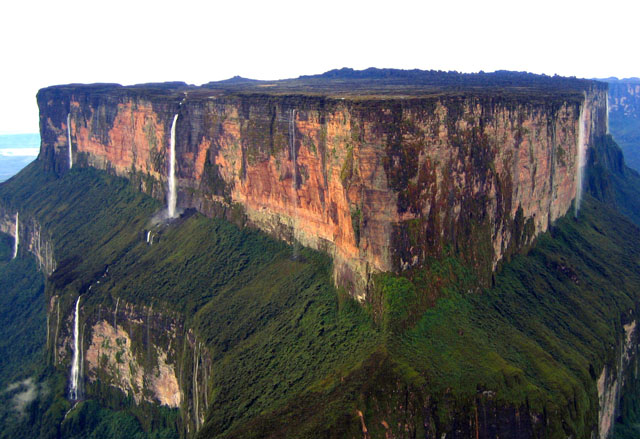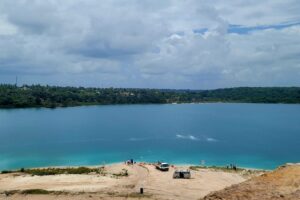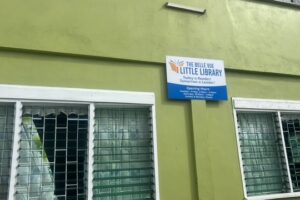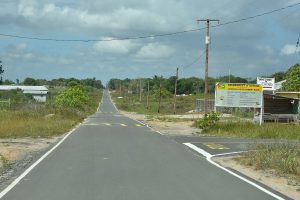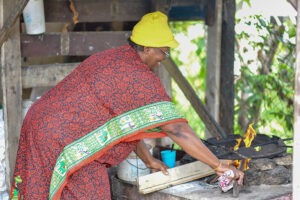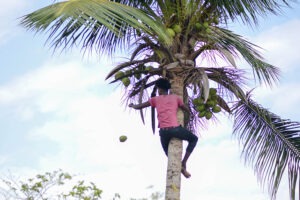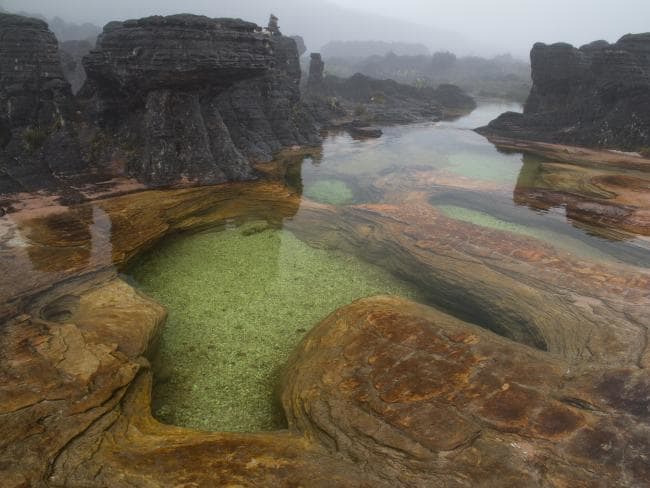
It’s a dramatic landscape. (Image Source: https://www.news.com.au/travel/world-travel/south-america/mount-roraima-is-a-fascinating-lost-world/news-story/231e00f84c2b83a7021cb89d4c7bf86f)
It is the desire of many hikers to explore various mountains; they get in touch with their inner sense of nature. The different flora and fauna that would be discovered when hiking is worth the hard work. To be high up, above the earth, nearer to the heavens is craved by many mountain climbers. Here they feel and smell the air which is often fresher; they are able to see the clouds, sky and sunset/sunrise in a clearer, more vivid setting. A beautiful mountain that can be found in Guyana is Mount Roraima; it is the highest mountain in Guyana.
Mount Roraima in Guyana
In Portuguese, Mount Roraima is termed ‘Monte Roraima’. Mount Roraima is the highest of the Pakaraima chain of tepui plateaus in South America; it is situated on the border of Venezuela, Brazil and Guyana. The tepui is the highest landform in Guyana. Mount Roraima is the first major tepui in the world to be climbed in 1884; it was climbed by Everard Thurn who trekked up a forested trail. This trail is the only easy way up; other routes do exist but they are extremely difficult and they require technical rock climbing experience. Mount Roraima along with other table-topped mountains are considered to be the oldest geological formations on earth, dating back around two billion years to the Precambrian Era.
Did You Know?
A tepui, or tepuy, is a table-top mountain or mesa found in the Guyana Highlands, especially in Venezuela and western Guyana.
Flora and Fauna of Mount Roraima
The summit of the mountain measure 31 square km and it is usually covered in fog. It features black rocks, gorges, wildflower gardens and a number of pools. Many of the species found on Roraima are unique to the tepui plateaus with two local endemic plants found on the summit. Plants such as pitcher plants, Campanula (a bellflower), and the rare Rapatea heather are commonly found on the escarpment and summit. Low scanty and bristling vegetation is also found in the small, sandy marshes that intersperse the rocky summit.
A diurnal toad is usually found on the open rock surfaces and shrubland of Mount Roraima. It is commonly called a Roraima Bush Toad (Oreophrynella quelchii) and is a species of toad in the family Bufonidae and breeds by direct development.
Take a Trip to Mount Roraima
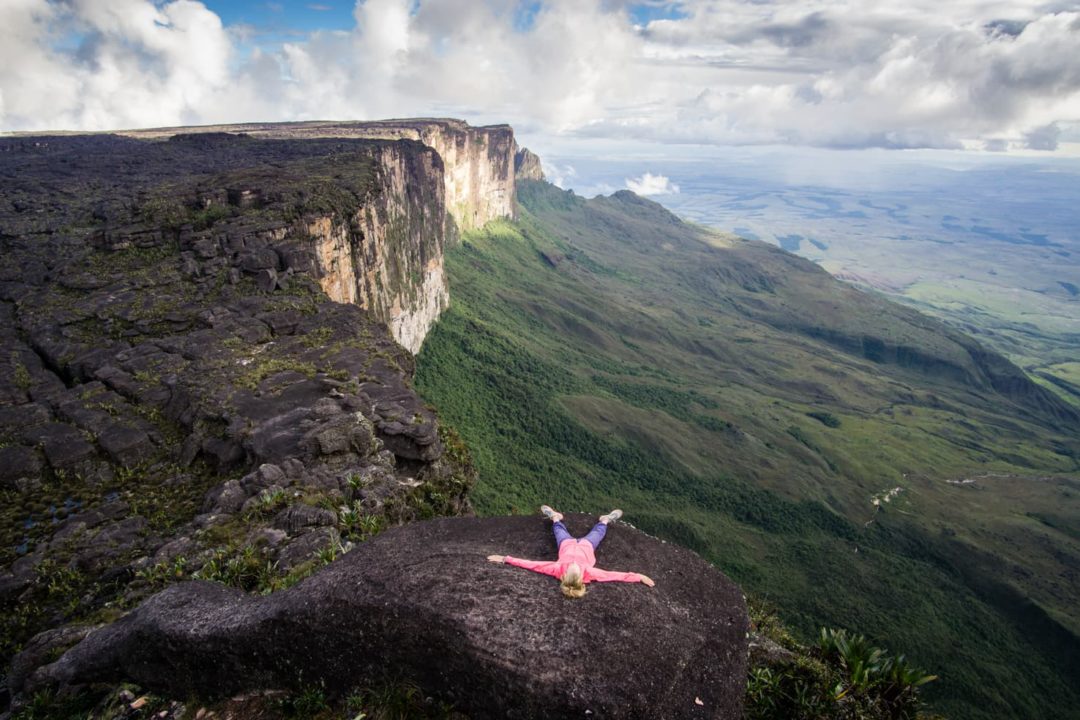
An adventure: (Image Source: https://travelwiththesmile.com/blog/mount-roraima-trek-venezuela/)
In addition to reading about Mount Roraima, looking at pictures of Mount Roraima and fantasizing about it – you can go to Mount Roraima and see it for yourself! How can you get there? You can book a tour at Adventure Guianas (AG) which is located at Mikel Plaza, 53 Pere Street, Kitty, Georgetown. They offer an overland trek tour to the mountain. It takes about seven days and six nights with the minimum of three persons.
Itinerary:
Day 1 – Depart Georgetown at 6:00am via four-by-four Land Rovers; there will be brief stops at Mabura (Police Check Point); you will then arrive Kurupukari (Essequibo River Crossing) where you will have lunch. The trip continues through Iwokrama Rainforest Reserve, you’ll arrive at the Canopy Walkway where a tour of it is given (optional). After, there will be brief stops at Annai, Rock View Lodge and Oasis. You will then arrive at Lethem, have dinner and overnight at AG Villa & Courtyard.
Day 2 – Immigration Lethem, cross the Takutu Bridge, immigration Bon Fim, Brazil. You’ll then arrive at Boa Vista, Brazil, have lunch (Brazilian Cuisine) and depart Boa Vista. After, you’ll arrive at Santa Helena (Venezuela Border with Brazil); go through immigration, have dinner and overnight.
Day 3-4 – Depart Santa Helena; arrive San Francisco de Yurruni (Roraima Base Camp) and begin trek, which entails hiking, outdoor camping and cooking for approximately two days before reaching the summit (favorable conditions).
Day 5 – Return to Base Camp and proceed to Santa Helena; stay overnight.
Day 6 – Immigration; arrive Boa Vista, have lunch then arrive at Lethem and stay overnight.
Day 7 – Return to Georgetown
Tip:
The top of Roraima is cold and wet so take waterproofs and warm clothes. The savannah also gets cold at night. Biting insects are a pest in the savannah, especially Kaboura flies. Take minimal gear and take all the food that you will need for the trip. Good boots will protect your feet and ankles from the rocky ground. Finally, walk with your camera, phone or tablet to take plenty of pictures of this breathtaking mountain.
Requirements:
- Valid Passport
- Yellow Fever Vaccine (Card must be presented)
- Brazilian and Venezuelan Visa for Non-Guyanese (Check with respective Embassies)
- Personal items (toothbrush, insect repellant, light clothing, sneakers, etc.)
- Information on preferential diet, allergies, etc.
Video: The Lost World – Mount Roraima
Mount Roraima
The mountain range for Mount Roraima is called the Guiana Shield. It is a triple border point, as it is the border between Venezuela, Guyana and Brazil. It reaches the height of 2,809 metres and is one of the highest of the peaks in the Tepui plateau in the whole of South America. The area contains some of the rarest flora and fauna that is not found anywhere else in the world. It would be a remarkable thing to see Mount Roraima and experience all that it has to offer personally. Guyana is privileged to have such a breathtaking view; visit it and see for yourself!
Article References:
- https://www.beautifulworld.com/south-america/guyana/mount-roraima/
- https://en.wikipedia.org/wiki/Mount_Roraima
- http://www.adventureguianas.com/tours/tour10.htm

